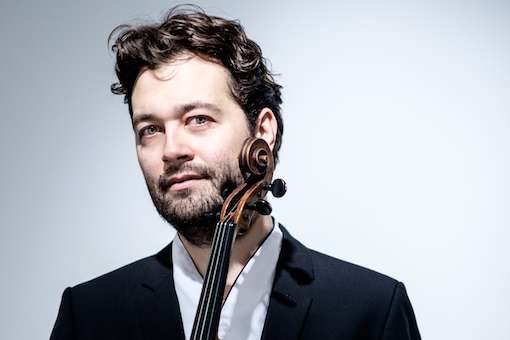“Brahms is this incredibly Romantic voice, but there’s so much more to him,” Lawrence Power tells me when I meet him after one of his concerts with the Nash Ensemble at Wigmore Hall. And there’s also more to the British viola player. A week earlier he had played the Brahms Double Concerto for violin and cello with Paul Watkins and the Västerås Sinfonietta, conducted by one of his best friends, Simon Crawford-Phillips; and last year, he tackled all viola and violin sonatas by the Romantic composer in a glowing, near three-hour marathon matinee at the Queen Elizabeth Hall.

Playing the violin allows Power to explore an even wider repertoire. "It’s a vehicle to put all those pieces, those miniatures, together and create interesting programmes. It’s like getting to know a person or learning a language. The more time you spend with them, the better you understand them and the more confident you are when you play their pieces. Once you understand the syntax of a composer, it’s really special. Then you can start to have a freedom with it, you breathe and live it.” Breathing Brahms means you have to understand the non-Romantic sides to him as well. “He’s also a completely structured and classical composer. Over the years he has had that reputation as the big Romantic, but this idea of that big fat Brahms sound is just a fashion, it has nothing to do with music. There’s no logic in recreating a tradition if you don’t understand where it starts and it’s important to recognise that these fashions influence performances which might actually be a very long way from what Brahms was intending. Think of the piano he was writing for, they were very different from the big Steinways we have now. If you listen to reference recordings of Joachim playing the violin, of Joachim’s students and people who were in Brahms’ orbit – that’s a very different world of playing! I’m fascinated to play Brahms, because his music can take so many different interpretations, like all great music.”
Joseph Joachim met Brahms through Robert and Clara Schumann in 1853 and soon became his violin muse and dedicatee of many of his works. “Brahms needed Joachim in his life,” Power laughs. “Certainly for the concerto and the cadenza, Joachim is part of that piece! The violin sonatas are beautifully written, but I think Joachim did help him – Brahms wasn’t a natural string writer.” Brahms’ other muse was Richard Mühlfeld, who he referred to as “Fräulein Klarinette” or “Meine Prima Donna”. Brahms so adored the sound of the clarinettist of the Meiningen Orchestra that he was tempted out of self-imposed retirement for a compositional Indian summer during which he wrote four of the greatest works in the instrument's chamber repertoire: the Clarinet Trio, Quintet and two Sonatas. Brahms, himself adoring the intimate sound of the viola, arranged the pieces for the equally autumnal instrument. “They are fascinating pieces and become very different with the viola. There’s a colour to the viola that works for these late pieces.” And there’s another genre for which the human-like and mellow sound of the viola works perfectly. “I love doing Brahms songs,” Power enthuses. “That’s the greatest discipline and challenge: to sing on your instrument. It forces you to get away from being an instrumentalist and to recreate the text with your instrument.”
Often degradingly dubbed as the “middle voice” of the string section, Power finds this, however, is the best place to be. “It’s the engine room, the middle point from which you can influence everything and everyone in a chamber group, and I think that’s why so many composers were drawn to the instrument. Dvořák, Schubert, Mozart, they all played the viola – everyone should play the viola! You can understand harmony in a much more immediate way. I love that part.” Power, who plays on an Antonio and Girolamo Amati from 1590, whose previous user was the legendary German-American viola player Walter Trampler, further expresses his adoration for Brahms’ chamber music. “He was surrounded by great players and there’s an equal level of writing for everyone. I find them very orchestral in many ways and I don’t necessarily distinguish between his chamber and orchestral music, they are all fascinating to look at. Schumann, on the other side, was a completely different composer. He composed with this sort of fantasy, while Brahms’ music has much more structure in it.” A structure that can be explained when you look at Beethoven and his influence on Brahms, I suggest. “He was always in Beethoven’s shadow, wasn’t he?,” Power agrees. “He was constantly looking back, collecting Couperin and Haydn manuscripts, Gabrieli, Mozart… he was obsessed with the past and probably one of the greatest musical historians. And I find you can see this influence in his chamber music as well as his orchestral music.”
When it comes to recordings, Power tries not to be influenced himself. “I’m more drawn to early reference recordings like Reginald Kell playing the Clarinet Quintet. It’s beautiful and a completely different sound. Of course, there’s this period as a student when you listen to lots of recordings, but the older I get, the less interested I am in them. You can get very influenced without realising it and I’m not sure it helps me do my job. These days, I get much more inspired spending time with the music, the piano, trying to find out some harmonies. It’s like exploring new music with no influences from the past. Brahms knew what he was doing and I trust his part. I play what he wrote which, ultimately, is the best option.”


